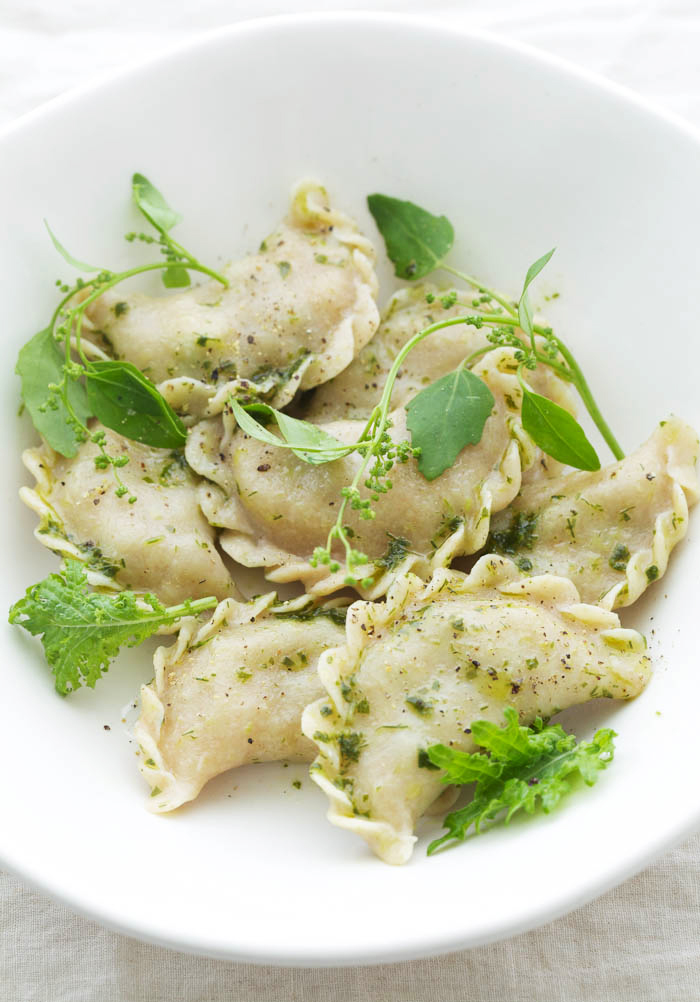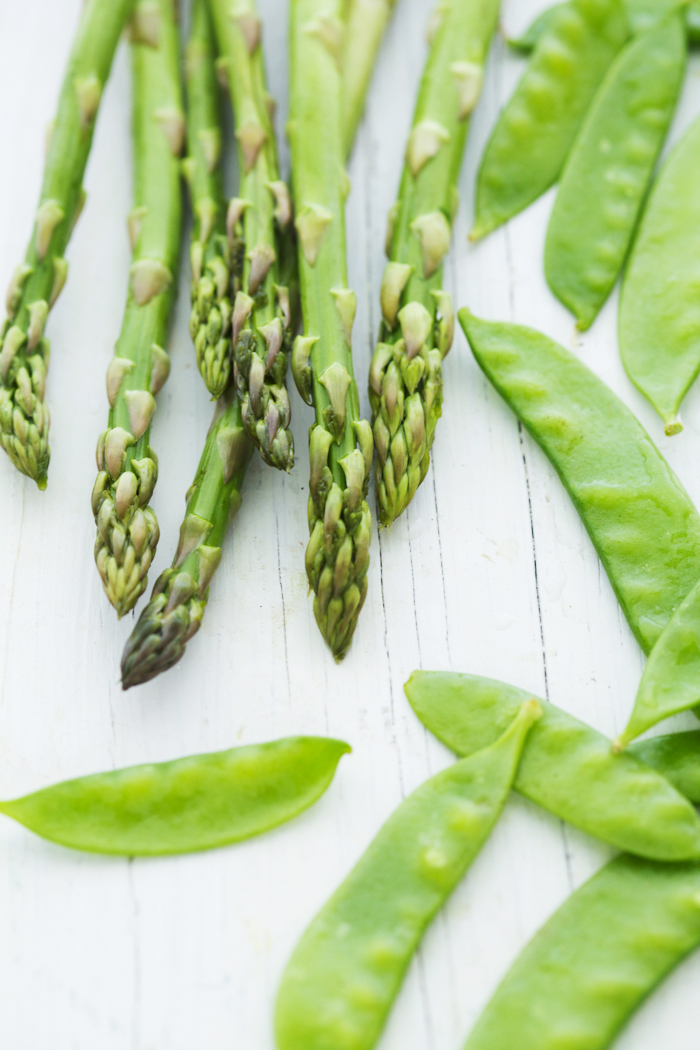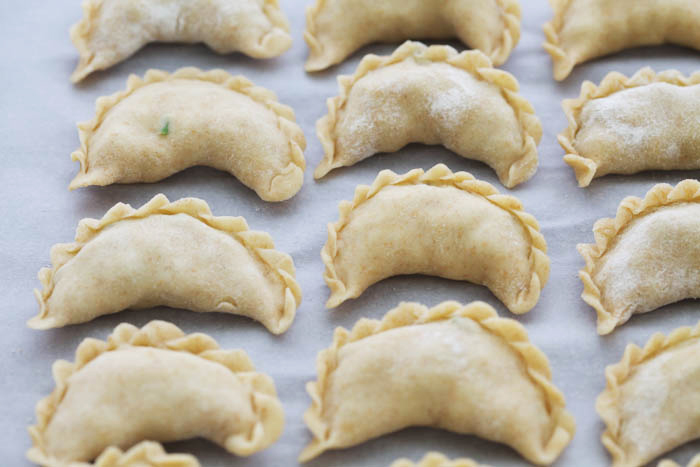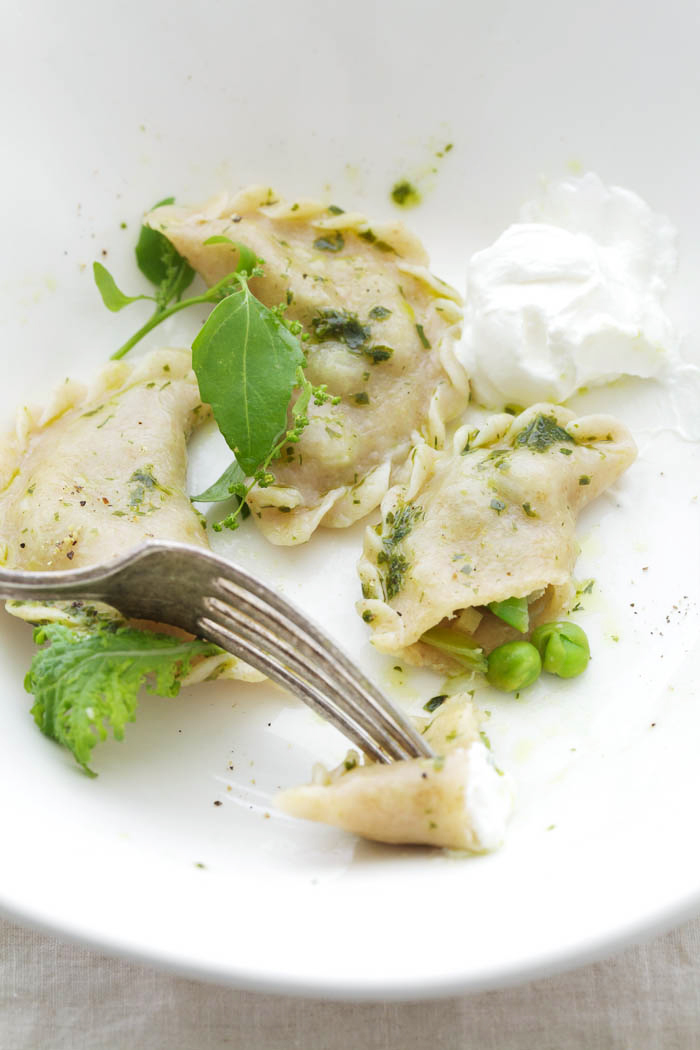
May 13th, 2014

If you think about it, pretty much every culture has some kind of dumplings in its food repertoire. Russians are not an exception and our pelmeni and vareniki are some of the most characteristic dishes of Russian cuisine. Russian dumplings are not just any food, as they often involve a family ritual.

Historically, kitchen duties in Russian households have been women’s almost exclusively. Our culture has been such where a woman cooks, raises children, keeps the house, while often working just as many hours as the man. Thankfully, all that has been changing. In many traditional families, however, when it was time to make dumplings, men would make and exception and participate in the crafting of them. Every family member was usually delegated a specific job – making the filling and the dough, cutting the dough and preparing it for rolling, rolling itself, distributing of the filling and, finally, shaping the dumplings. This way, the entire family could make a couple of hundreds of dumplings in just couple a of hours, freeze them and have them handy for several weeks to come.


In cold winters, back when refrigeration wasn’t an option, dumplings were stored in pillow cases hanging out of windows. They are also a very economical dish, as you can feed a lot of people using less ingredients as a stuffing – meat, potatoes, farmers cheese, etc. Originally, that was one of the reasons for dumplings becoming so popular, when food was in deficit.



The only traditionally Russian thing left in the vareniki that I share with you today is the way I crafted them with the pinches around the edges. I made the dough vegan and with spelt flour instead of wheat. And the filling is very green and light to celebrate spring.
We are in Russia and having a great time catching up with friends and family. Enjoy and until next time.

Spring Vareniki
makes about 60-65 dumplings
for the dough
1 cup whole spelt flour or sprouted spelt flour
2 cups light spelt flour
1 teaspoon sea salt
3 tablespoons coconut or olive oil
1 1/4 cups boiling water
for the filling
1 tablespoon olive oil
1-2 shallots or 1 small yellow onion – diced
1-inch piece fresh ginger root – peeled and minced
1-2 garlic clove – minced
about 10 asparagus spears – diced
2 handfuls snow peas
1 cup green peas – fresh or frozen and thawed
sea salt to taste
1/2 lemon – juice
handful of fresh basil – torn, optional
to make the dough
1. Combine flours with the salt in a large mixing bowl. Add oil and work it in with your hands.
2. Slowly pour boiling water in, stirring. Knead into a soft dough, cover and let rest while making the filling.
to make the filling
1. Warm the oil in a large pan over medium heat. Add shallots, ginger and garlic, sauté for 4 minutes.
2. Add in asparagus, snow peas and green peas, sauté until vegetables are bright green, for about 4-5 minutes. Add salt and lemon juice, remove from heat. Let cool.
to make the vareniki
1. Flour your working surface with the light spelt flour. Cut one medium-sized piece from the dough at a time and roll between your hands into a rope of an even thickness.
2. Cut the rope into small pieces. Roll each piece in the flour and press into a round disk with the palm of your hand.
3. Roll each disc into a 1/8-inch thick dumpling skin. Add the basil into the filling if using.
4. Fill each skin with a small amount of filling. Pinch both edges together to enclose the filling (make sure that they sticks together securely – that’s why we use the pinched-out seal pictured in photos). Lay the finished dumplings on a parchment paper covered tray.
5. Repeat with the rest of the dough and filling. Cook the vareniki immediately or freeze. Transfer into large ziplock bags once hard and keep frozen until ready to use, within one month.
6. To cook the vareniki, bring a large pot of salted water to a boil. Add in the vareniki and gently stir to make sure that they’re not sticking to the bottom of the pot. Boil for 3-4 minutes. Remove with a slotted spoon. Add ghee or any mild tasting oil. Serve with your favorite pesto, chimichurri or the traditional Russian way – with sour cream (good plain yogurt will work as well).
Note: Alternatively, you can divide all the dough into two portions and roll one portion at a time to be 1/8 inch thick. Then cut out uniform skins using a glass or cookie cutter. Re-shape, re-roll and re-cut the scraps until all the dough is used up. Keep the skins covered.
Tags: asparagus, basil, mains, peas, spelt
-
These vareniki sound amazing! we usually see frozen vareniki and pelmeny with meat or potato fillings, but using all the best vegtables of spring? Yes please!
-
i LOVE vareniki!!! my family and i always go to russian tea time in chicago around the holidays and i always get the vareniki!!! so so good. i’ve never made them from scratch though. thank you for this recipe!!
-
Anya, what a great recipe. I will share it right now. My type of vareniki :). I have a Q: where did you find spelt flour in Russia? How does it call there?
-
You’ve done it again. Some blogs I just enjoy reading the recipes, but yours I add to the list of ones to cook. Can’t wait for your cookbook!
-
BEAUTIFUL! I’m polish and my favorite pierogi filling is mushrooms. can’t wait to try these, maybe adding a morel or two? :)
-
This post is absolutely gorgeous! Loved to read about the story behind pelmeni and vareniki; Russian cuisine is so fascinating. Thank you for sharing your take on traditional Russian cuisine with this gem of a post.
Wishing you a wonderful time surrounded by your loved ones. Enjoy every moment.
xo, Sini
-
These are so beautiful. What a treat!
-
What a beautiful post, interesting history behind the culture. Love this dish!
-
these are so beautiful and perfect for this time of year – filled with all of spring’s lovely greens. hoping you are having a lovely time in russia!
-
Hello, how can we buy your book in Europe?
PLS let me know, Im dying to have it!
thanks, -
These are so pretty! There’s no way I could shape them nearly as well as this!
-
These look beautiful and delicious. As someone with celiac I can’t have spelt however – would you recommend any combination of flours for this or just a gluten free all-purpose flour? If not, no worries! I can experiment.
-
These photos are so beautiful! And I can’t wait to try these, they look delicious. And thank you for the back story, I always find the history of the dishes so interesting.
-
[…] Spring Vareniki – So delicious looking. Plus it’s Russian which is a huge huuuuge bonus for me! […]
-
I think I’m going to be dreaming about these in my sleep. Simply lovely!
-
[…] Spring Vareniki:: Golubka ~ I can’t stop daydreaming about these scrumptious dumplings. […]
-
These look REALLY tasty! And pretty! I’m definitely pinning this recipe to make later!
-
[…] garde aussi en tête la recette de ravioles en bouillon safrané créée par Marie Laforêt et les ravioles farcies d’asperges et de petits pois d’Anya […]
-
bonjour, en francais, cela corresponds a quels ingredients s’il vous plait ? je ne retrouve pas cette recette dans la partie des recettes en francais. en vous remerciant
-
[…] minute I saw this Spring Vareniki by Golubka I knew it was going to make it into my weekly roundup. It is based on a traditional […]




